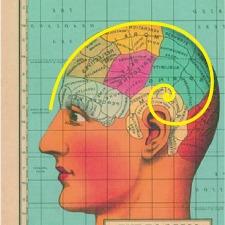BOB GARFIELD: Once Adam Lanza had been correctly identified as the shooter, speculation quickly turned to why he had killed so many. Particularly bandied about was whether Lanza had been diagnosed with either a personality disorder or Asperger’s syndrome, a condition on the high functioning end of the autism spectrum, associated with extreme social awkwardness.
DR. MARC SIEGEL/FOX NEWS: If he had something called Asperger’s, he may have had ongoing meltdown.
MAN: People are gonna look at how we treat people we know have some sort of a mental disease or defect or –
CNN REPORTER: - form of autism. According to a law enforcement official who spoke on the condition of anonymity, that could be very significant…
BOB GARFIELD: Curtis Brainard covers science journalism for the Columbia Journalism Review. He says the media were not only wrong but dangerously so, when they linked the Newtown massacre to autism.
CURTIS BRAINARD: There's absolutely no association between autism and acts of premeditated violence, such as those that we saw in Newtown.
BOB GARFIELD: And yet, in a vacuum of information, any detail that the press gloms on, accurate or not, tends to take on all sorts of significance out of proportion to itself.
CURTIS BRAINARD: The public, the media themselves, are looking to grasp onto anything that they can to understand why somebody like Lanza or like any other number of mass killers out there could have done what they’d done. And often that quickly becomes the mental state of the shooter. We saw it after the shootings in Tucson, Arizona, we saw it after the shootings in Aurora, Colorado, in which Joe Scarborough speculated that James Holmes, who committed those murders, probably had autism, and I believe just, a, a day or two later Scarborough had to get back on the air and apologize.
BOB GARFIELD: There was an early report that showed up on FOX News Channel and at theatlantic.com that referred to an ABC News report that Ryan Lanza, the shooter's brother, had told authorities that Adam had Asperger’s and some sort of undetermined personality disorder. But weirdly, if you follow that back to the source, a timeline on an ABC News blog, there's no evidence of that report. Do you know whether what we saw was a false sourcing to an unsourced report, to begin with, or whether ABC actually expunged the item from its timeline?
CURTIS BRAINARD: It's a very good question. It's not altogether uncommon, when you have a sort of live blog report like they were running, for updates to get deleted out as they are subsequently disproven. This is kind of one of the perils in our instantaneous media system. I have no way of knowing whether or not that's what happened with this ABC News report.
BOB GARFIELD: Do you think it's the association people make between the archetypal loner and the awkward Asperger’s case that makes this such a – an apparently fetching fact for the press to transmit?
CURTIS BRAINARD: Journalists are absolutely latching on to some of the symptoms of autism and extrapolating to make them fit this profile that we have of the loner gunmen, the social reject who one day snaps. But that’s a really far leap that journalists are making, and is just totally irresponsible and uncalled for.
BOB GARFIELD: In the early days of HIV-AIDS, there was all sorts of irrational fear about exposure to people who were HIV-positive and people pulling their kids out of school, exactly those kinds of unsubstantiated fears that the autism community worries about now. Should they be worried?
CURTIS BRAINARD: They absolutely should be worried. Because of the coverage that’s already gone by, some people will forever associate this incident with autism. National surveys have shown that the media consistently over-report dangerous angles associated with mental illness. Other surveys have shown that this takes its toll within the public at large, where many Americans have very badly misconstrued ideas about the connections between people with mental illness and violence.
There are very severe risks for not only the mentally ill but for people who just are a little bit socially awkward. If the media get too carried away with this, people will start looking suspiciously at any kid in high school who keeps to himself.
BOB GARFIELD: Now, you’ve observed that there was one news organization that did everything exactly right.
CURTIS BRAINARD: The Poughkeepsie Journal in New York. This is a smaller newspaper. It does not probably have a lot of science writers, a lot of mental health [LAUGHS] experts on staff. And what this paper did in the day after the shooting was contact a local autism care center in a neighboring town, one that's highly respected nationwide, and all of the experts there were able to provide valuable context.
BOB GARFIELD: Curtis, thank you very much.
CURTIS BRAINARD: It was my pleasure.
BOB GARFIELD: Curtis Brainard covers science journalism for the Columbia Journalism Review.
We contacted ABC News about the disappearing information in their blog post. They did not provide a comment.

